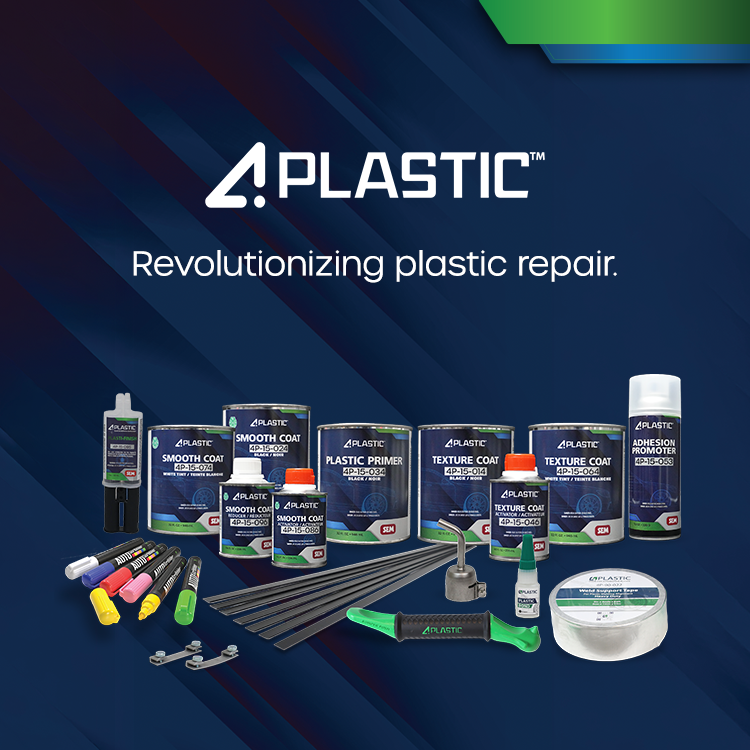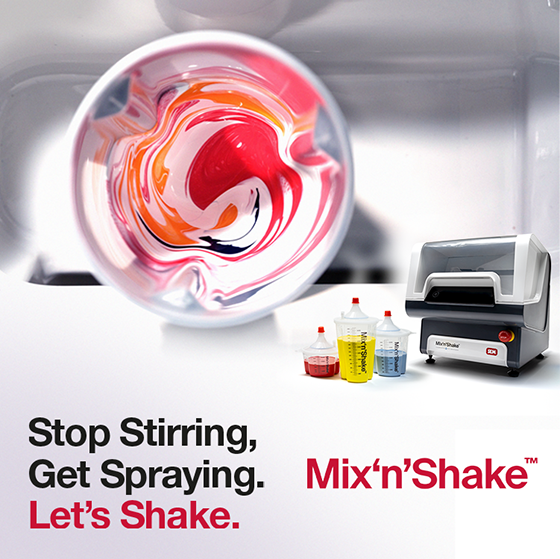Understanding Corrosion
The hot topic as of recent has centered on the use of corrosion inhibitive products in the collision repair industry with some insurance companies adopting policies to ensure they are used. Direct to metal primers, weld-through primers, cavity waxes, undercoatings, sealers and even adhesives all fall into this category but questions of what, when, where, why and how still seem to plague technicians. The following should help to clear up those questions and some misunderstandings as well.
It’s all in the name
The easy answer for what corrosion inhibiters do is exactly as the name implies, they stop or impede the ability for a surface to corrode. But that’s where the easy ends. Up to this point, you probably think I’m talking about rust, right? Although rust (iron oxide) is the most abundant type of corrosion in our industry, it’s not the only one. Increases in CAFÉ Standards are pushing vehicle manufacturers to use aluminum to lighten the load of vehicles. Although aluminum may not “rust” in the same sense as steel, it can and will corrode in the form of aluminum oxide and when steel and aluminum touch, you have galvanic corrosion. Here’s a little help on each.
Iron Oxide (Rust)
Iron oxide is seldom mistaken. Traces of this red, flakey corrosion can be spotted on everything from simple gardening tools to bridges. If it’s made of steel and open to the environment, then chances are it has formed rust. Iron oxide is created when oxygen and water come into contact with ferrous metals containing iron such as steel. It begins by attacking the unprotected surface of the metal and expanding, causing the surface to flake and exposing new areas of raw metal. Left untreated, iron oxide will eventually convert the entire surface to rust and crumble.
Aluminum Oxide
Aluminum is a “self-healing” metal. Left open, aluminum will create a thin layer of aluminum oxide to protect the surface from further corrosion. Appearances of this corrosion can be as simple as a dulled look or a powdery white film on the surface. Aluminum oxide is considered to be one of the hardest elements on earth and will begin to repair itself immediately if damaged. This is why getting paint to stick to bare aluminum has always been a challenge. Although aluminum oxide is considered in most cases “stable”, following paint manufactures guidelines on how to deal with it will provide maximum corrosion protection and adhesion.
Galvanic Corrosion
When two different metals come into contact with each other, in the presence of an electrolyte, galvanic corrosion can occur. As seen in the scale below, the electrode potential of all metals in relation to each other are rated using an anodic index. The higher on this list (most noble) the metal is, the least likely it will be to corrode. A great example of galvanic corrosion was the remodeling of the Statue of Liberty in the mid 80’s. The copper shell had been supported by an iron frame that was initially coated with shellac. Over time, the shellac failed and the two metals were allowed to come into contact with each other. This created galvanic corrosion and as a result, the statue was disassembled and recoated with a PTFE (Teflon) coating. Iron being lower on the anodic list than copper was the first to corrode as a result.

Few metals are lower on this list than steel and aluminum which is why they present such a challenge to prevent galvanic corrosion. Many manufacturers use the process of galvanizing steel with zinc. Zinc being lower on the list will corrode before steel. This is why most weld-through primers consist of zinc. Attention must be given to even the smallest of details, such as fasteners, when inhibiting galvanic corrosion.
Corrosion Inhibitors
Direct to metal primers (DTM)
DTM primers can provide adhesion and corrosion resistance to bare metal surfaces. In many cases, simply providing a barrier coat between the surface and environmental conditions will help stave off corrosion.
Weld-through primers
These primers provide the same barrier coat as previously discussed with DTM primers with one exception, they can be welded through without losing any corrosion protection. Most weld-through primers consist of zinc, as it is a less noble metal and will corrode before steel. Some manufacturers also include copper into the formula to help with welding conductivity. Copper provides no corrosion protection, so make sure you use one that has both copper and zinc such as SEM’s Copperweld™. Copperweld is zinc-based for corrosion protection and copper-enriched for conductivity for the best of both worlds.
Cavity Waxes
OEM’s spray an anti-corrosion cavity wax on the inner panels of vehicles to protect inner seams that can’t be sealed from corrosion. In collision centers, these products are applied after panel replacement by spraying through access holes with a 360° spray pattern tip attached to a long wand, ensuring complete coverage of the inner panel. There are several aftermarket manufacturers with this type of product but not all are equal. Make sure to choose one that provides a complete 360° pattern with no gaps for complete coverage and also has excellent wicking characteristics to pull itself up into internal seams for maximum corrosion protection. SEM’s Rust Preventer Cavity Wax provides best in class for all characteristics.
Undercoatings
These coatings are sprayed on exterior underbody components to create a protective layer to guard against rock chips and road contaminants particularly in wheel openings. Undercoatings consist of either an asphalt or rubberized base dependent on the job or quality. Asphalt-based undercoatings are more economical but usually stay soft and can’t be painted due to bleed-thru of the asphalt. Most rubberized-based undercoatings are faster, dry harder and can be topcoated. Be careful though, some manufacturers use asphalt in their rubberized undercoatings to control cost. Spraying a dot from about 12” away onto a white piece of masking paper is a great way to check the quality of your undercoating. Examination of the edge of the dot will reveal either a brown hue (asphalt) or black (rubber). SEM offers both in their product line Undercoating (asphalt-based) and Rubberized Undercoating.
Sealers
Seam sealers have been around for decades but they’re just as important now as ever. When two panels are joined together they create a joint. This joint, if accessible, is usually sealed with seam sealer to prevent moisture from penetrating the area. Seam Sealers are available from many manufactures and come in a variety of colors. Seam Sealer color is extremely important in returning the car to pre-crash condition as most OEM’s no longer completely cover the sealer with paint on internal joints. Another consideration is to whether the sealer is direct to metal capable or must be applied onto a primer. SEM offers seam sealers in all 4 OEM colors; gray, beige, black and white and all are direct to metal capable and carry the SEM Forever Warranty.
Adhesives
Adhesives are particularly useful in creating barriers to prevent rust as a protective coating but can also be used to prevent galvanic corrosion by acting as a spacer between two different substrates. Some adhesive manufacturer’s instructions do not stress any importance in brushing or spreading out the adhesive before bonding the surfaces but this is the most important step in inhibiting corrosion, insuring that the bare metal is covered. Another consideration is choosing an adhesive that can work on multiple substrates. SEM’s Dual-Mix™ Multi-Purpose Panel Adhesive is designed to work on steel, aluminum, smc and fiberglass in any combination. Multi-Purpose Panel Adhesive can even be welded through as long as it’s done during the adhesives working time.
In closing
With collision centers standing behind their work for the life of the vehicle, understanding corrosion will allow them to deliver a first class repair that will stand the same test of time. As your grandfather taught you, an ounce of prevention is worth a pound of cure.
Recent Posts




